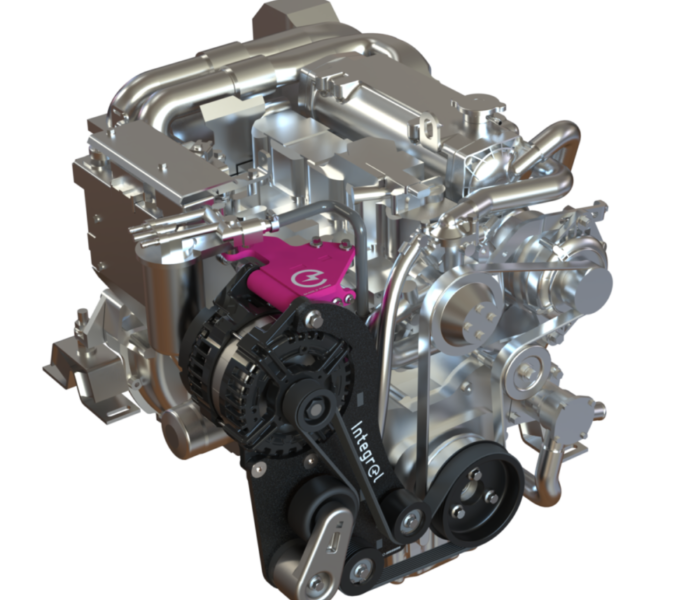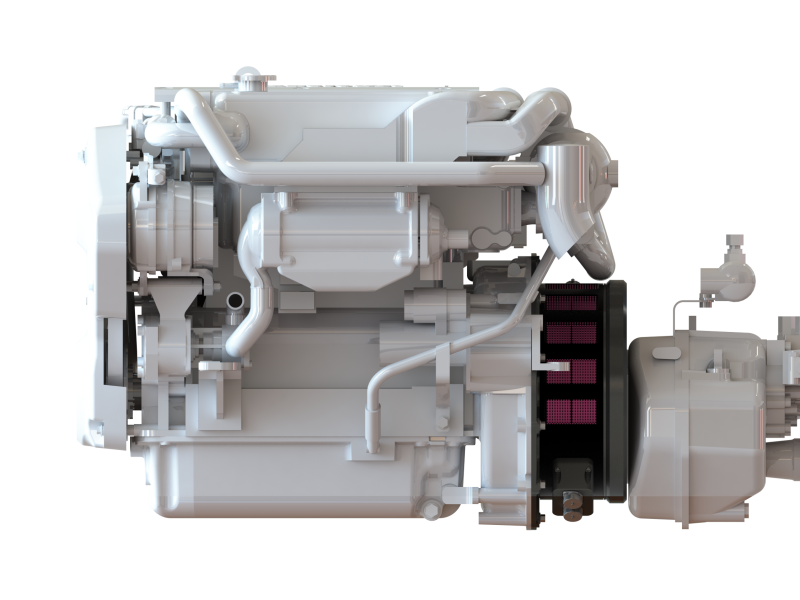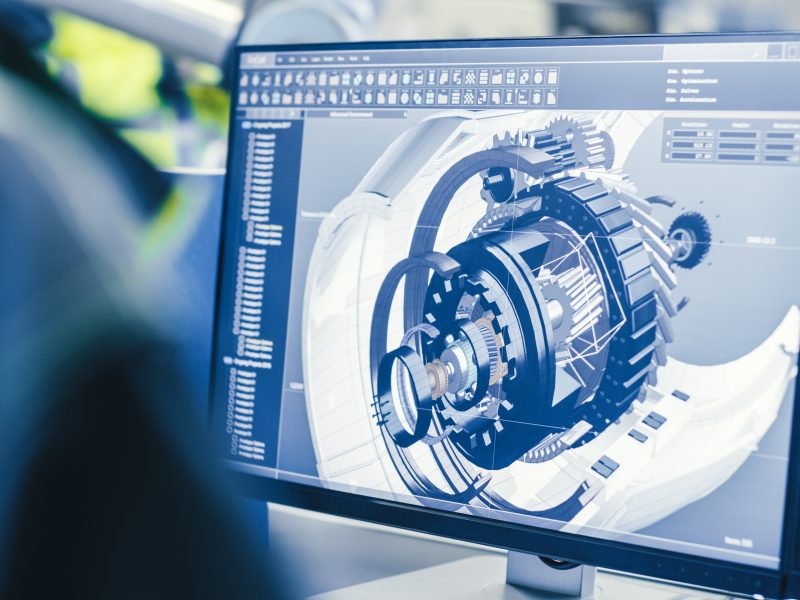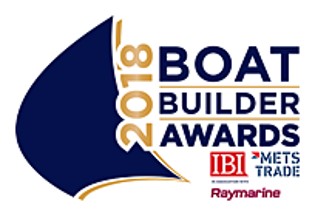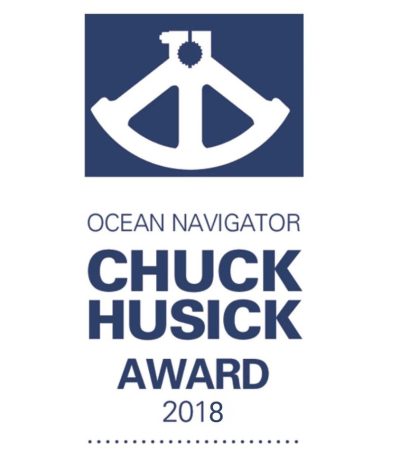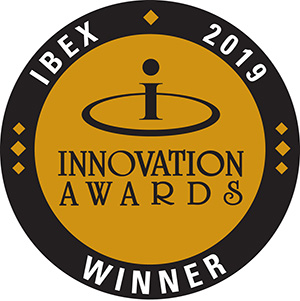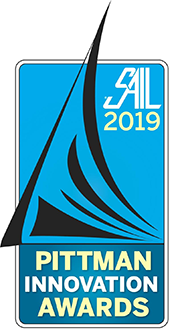How much power does Integrel E-Power generate?
Up to 18kW! Integrel E-Power can generate up to 9kW of power for a single system and up to 18kW of power for a dual system. Each system is thermally regulated and usually generates 7-8kW depending on the temperature of the engine bay.
What are the differences between a generator and Integrel E-Power?
The most obvious difference is that Integrel E-Power does not require a separate engine. This means fitting costs are less than a stand-alone generator with no need for through-hull fittings and no separate fuel, exhaust or cooling systems. Lifetime maintenance costs are also substantially less since E-Power only needs a periodic belt change; no more second engine checks and maintenance schedules.
Integrel E-Power also improves the fuel efficiency of the propulsion engine, reducing overall vessel fuel consumption by up to 25%. It is fully automatic, managing electrical power generation, storage, conversion and distribution in one package. The system lets you reduce the size of your 12V and 24V house battery banks with its powerful battery-to-battery charging capability and reduces the size and weight of the cabling for power hungry consumers such as bow thrusters, windlasses and winches.
Can I remove a generator and replace it with Integrel E-Power?
A single Integrel E-Power system replaces a generator up to about 10kVA, and a dual system up to 20kVA. Integrel E-Power itself is fitted directly onto the propulsion engine; it occupies little space and weighs only 15kg.
The storage batteries that it uses are normally fitted into the same space as the stand-alone generator it replaces. A 10.4kWh lithium battery pack for example measures 237 x 650 x 330mm (2 batteries) and only weighs 78kg!
Does a catamaran need two Integrel E-Power systems, one on each engine?
A catamaran typically has an Integrel E-Power system fitted to each engine to provide redundancy and balanced engine running hours. A dual system can also charge multiple battery banks at twice the rate of a single system and can support high continuous loads. Integrel E-Power is self-organising and can run with two units connected together, sharing the load as needed with no user intervention required.
However, a dual installation is not mandatory on a catamaran. A single system fitted on a twin-engine boat performs perfectly well but takes a little longer to charge multiple battery banks. If the engine is run in generator only mode when only one engine is fitted with Integrel E-Power, it will accumulate more hours than the other engine.
How is Integrel E-Power different from a high-power alternator?
Integrel E-Power is a complete power generation, storage, conversion and distribution system.
Integrel E-Power is very different from a conventional high-power alternator:
- E-Power delivers rated power continuously. For example, with an ambient temperature of 25°C, the generator delivers a constant 8.3kW.
- The control system is radically different to a conventional high output alternator and harmonises with the engine speed to maximise fuel usage, alongside plenty of power generation.
- The coupling of the magnetic flux between the rotor and stator has been dramatically improved to give a very high generation efficiency.
- The windings have been designed to give the specific voltage range needed and to provide unusually high-power output at low revs. With a suitable engine, up to 4kW of 48V DC output power is available at low engine idle.
- The E-Power alternator itself does not have embedded electronics, and has a much-improved cooling airflow to better manage high power output.
- The customised engine mountings are specifically designed to minimise side loads on the engine, eliminate shock loading, and maximise belt life.
- The E-Power system runs around 50-65% higher nominal output than traditional high output alternator systems.
What does Integrel’s Warranty Policy cover?
In short, for complete customer reassurance, Integrel Solutions supply a 2 year replacement engine warranty backed by a $2.5M per-claim policy underwritten by Lloyds of London. Furthermore, installing Integrel E-Power or Integrel E-Drive does not void an engine manufacturer’s warranty, they can only refuse to cover damage if proven to be attributable to an Integrel E-Power system. A full copy of our Warranty Policy can be found here.
Will installing Integrel E-Power on an engine invalidate the warranty?
We provide a worldwide Lloyds of London backed insurance policy that states, in the event an engine manufacturer refuses warranty, Integrel Solutions will repair or replace the engine.
A full copy of our Warranty Policy can be found here.
Is Integrel E-Power available with 12V or 24V output?
No, Integrel E-Power outputs 48V. The system operates at 48V as this is the most efficient “safe to touch” voltage that is certified for leisure craft. Using 48V ensures energy production is maximised while simultaneously minimising conductor weight and cost.
How can I keep my other 12V and 24V banks charged if I’m charging at 48V
You can use DC/DC chargers to keep the other house battery banks topped up. You may be able to reduce the size of the house banks if the inverters and other large loads are running off the 48V bank. This helps utilise the high density of the Lithium bank and lighten the boat.
Why generate power at 48 Volts DC?
Integrel E-Power uses DC because it generates usable electrical power regardless of the rotational speed of the E-Power unit. It is also very flexible to manage and is directly compatible with battery storage. Most boats have DC systems onboard, and we can service these with a minimum of conversion losses.
48 volts was chosen as it is classified as “low voltage” and is safe to handle. If you accidentally touch a live terminal, it will not harm you. Using 48V to power high-demand consumers provides a large system cost and weight saving. 48 volts also allows relatively small diameter cables to be used which are less expensive and physically easier to install. Read our blog about the 48V ecosystem for more.
Are 48V solar regulators (MPPT) available?
Yes, there are high quality 48V solar regulators available. Using the solar array to charge the main battery banks directly is a good way to use the energy and it can then be trickled down to the house banks via the battery-to-battery charger.
Can Integrel E-Power be retro-fitted to a vessel?
Yes, with most vessels it’s easy to retro fit the system to the engine, but make sure you consider battery space and refer to the builder’s plate in regard to weight and placement of batteries. Please get in touch with us for more guidance.
Is my boat big enough for Integrel E-Power?
The smallest engine that can be used with Integrel E-Power is 40hp but ensure your boat has enough space for the required batteries. As a rule, we recommend a minimum of 10kWh for a single E-Power system and 20kWh for a dual E-Power system.
What engines can Integrel E-Power be fitted to?
We provide custom brackets for Integrel E-Power to be fitted to many engines including Volvo, Yanmar, Nanni and Beta. From 40hp up to 1000hp. Please enquire about our range as we are always developing new brackets and solutions for various engine types.
What batteries does Integrel E-Power work with?
Integrel Solutions only work with certified battery manufacturers. There are too many dangerous, uncertified batteries on the market, and we take safety precautions very seriously.
The current approved Lithium battery types are:
- Mastervolt
- Victron
- MG Energy Systems
- Lithionics
For all battery manufacturers we complete full and extensive testing to ensure safety and reliability. We only test batteries that pass our required safety specification. The batteries are a critical part of the Integrel E-Power system, and our goal is to ensure maximum safety and reliability.
Can lead acid batteries be used with Integrel E-Power?
Some of the early Integrel E-Power systems were installed with lead acid batteries but due to usage of the system and the frequency of charge and discharge we no longer support lead acid. The benefits and safety of using Lithium Phosphate battery systems are greatly superior to lead acid on larger banks.
| Battery Feature |
Li-Ion benefit (compared to Lead Acid batteries) |
| Discharge Rate |
Li-Ion provides energy 2X higher discharge power than lead acid |
| Weight |
Li-Ion is 30-50% lighter than lead acid |
| Lifetime |
Li-Ion lasts 4 times longer than lead acid |
Can the Integrel E-Power controller manage both the Integrel and Yanmar alternator?
Integrel E-Power does not need to manage the Yanmar alternator(s). We do not touch them. They are a backup that should be left in place.
Can the Integrel E-Power controller charge both the AGM start battery and Lithium bank?
Yes. Integrel E-Power puts all charge sources into the 48V battery bank, and trickle charges the AGM batteries via a DC-DC converter(s).Yes. Integrel E-Power puts all charge sources into the 48V battery bank, and trickle charges the AGM batteries via a DC-DC converter(s).%MCEPASTEBIN%
9kW seems to be a large load for the multi grooved belt shown in the videos, how frequently do you recommend that the belt be changed?
We recommend every 500 hours, although we have customers who have used belts for over 1,000 hours. The system has been designed with automatic tensioners to prevent having to check tension and to aid in replacing the belt.
Is special cooling required to run Integrel E-Power?
No. Integrel E-Power does not require any special cooling. Diodes and other sensitive electronics are incorporated in the Integrel Controller to optimise airflow. It is however recommended, but not mandatory, to add additional cooling. This can help raise the nominal output of the system.
Is maximum charge available at medium revs when the prop is not being driven? Does your controller couple with a mechanical gear controller to know when the gearbox is not engaged?
Yes. We have gear detect calculated into the charging algorithms. This aids in adjusting the charge profile to harmonise with the engine and allow for prop prioritisation. This is especially important on smaller engines but not so much on the larger engines due to the available torque.
If a boat’s engine is run for an extended period at 1200 rpm, bore glazing is usually a problem. Does this disadvantage use of the Integrel E-Power?
Bore glazing occurs if the engine is not loaded. Integrel E-Power loads the engine optimally which will in fact extend engine life.
Is running an air conditioning unit practical with Integrel E-Power?
Use of air conditioning with Integrel E-Power is very practical. For example, a 36 kBTU air conditioning unit can run overnight (10 hours) and only consume 50% of the capacity of a 21kWH of battery. It is best to choose a later model variable speed Air Conditioner unit. They have very low startup amperage, do not require the wiring of a “soft start” and are up to 50% more energy efficient.
Where should I place the Lithium battery bank on my boat?
The space where a generator would normally be placed is the right place to store your batteries as the weight and balance considerations have already been considered by the yacht manufacturer’s naval architects.
The forward locker is a very common location for a Genset, and there is no problem locating the batteries there provided they are well secured to prevent movement.
Will 1700W of solar work with Integrel E-Power?
1700W of solar will average about 6.8kWh of energy per ‘sunny’ day. Solar is always good to supplement energy needs, particularly when at anchor for more than one day.
To calculate the amount of solar energy you will store in one (sunny) day, multiply solar capacity by a factor of 4 i.e 1700W x 4 = 6,800W (6.8kW). This will vary greatly depending on available sunshine and if there is any shading of solar panels.
Can 2x Integrel E-Power systems be set up to charge one large battery bank?
As long as the battery bank is large enough to handle the maximum current of the system, there is no issue to have dual E-Power systems connected to one battery bank. In fact, this is the most common configuration.
Can I install a 48V DC watermaker directly wired to the 48V system but have the remaining boat as 12V DC with 120V AC inverters for AC power?
Yes. The inverter we supply is connected to your 48V DC battery bank and converts to 120V AC. The water maker can be connected directly to the battery bank.
You will have 48V to 12V DC-DC converters to keep your 12V staging batteries charged when the engines are not running. This provides you with maximum redundancy to protect against:
- 12V alternator failure
- 48V battery bank failure
- Integrel E-Power failure
Will I get a schematic of the Integrel E-Power system after installation?
If Integrel E-Power is installed at point of manufacture by the builder or by one of our installation partners, they will provide a system diagram.
Can I mix and match batteries?
No. Mixing battery types results in incorrect charging and potential battery damage. Ideally, all batteries should be installed at the same time, be from the same manufacturer and be the same type. They will then charge and discharge consistently, balance correctly and achieve the longest possible life.
What size mains AC inverter do I need?
The inverter should be sized to meet the peak AC load. This is not the sum of all the possible AC loads but the sum of the loads likely to be used at the same time.
For example, an electric cooker may consume up to 5kW; an electric kettle 3.5kW; a fan heater 2kW; a hair dryer or a water immersion heater 1.5kW. It is unlikely that all of these appliances will be on at the same time, so a boat fitted with all these would probably need a 6 or 8kW inverter. The inverter draws power directly from the 48V system, 8kW draws 160A at 50V which is well within the capability of the system.
Is it practical to use Integrel E-Power while idling the engines. For example, when at anchor can I top up my leisure batteries by turning on the engine that Integrel E-Power is connected to and get a fast charge whilst stationary?
Yes, absolutely! However, if you use the engine(s) sufficiently getting in and out of a marina, or off a mooring ball, setting the sails, cruising under power if there is no wind etc, then you rarely need to run the engine(s) at idle to re-charge the batteries.
Integrel E-Power does not add any load to the engine until the engine is warmed up. It stops immediately if there is a sudden increase or decrease in RPM and pauses until RPM is stable. Integrel E-Power is designed to deliver very high output at low RPM.
This prevents:
- Overloading the engine while cold
- Running the engine at low RPM without load i.e. Power generation mode only
- Compromising propulsion when needed
- Running the engines at idle around 700 RPM generates 2-3 kW, and at 1700 RPM, around 7.5kW.
What engines do you support?
See our datasheet here for the engines we currently support and that are in development.
Do inverter/chargers need to be on when plugged in to shore power for better charging of the system?
Normally yes, but with Integrel E-Power it’s up to you! The ‘charger’ part of the Inverter/Charger is used to charge the battery bank (via shore power) which is typically a good idea while plugged into shore power.
The ‘inverter’ converts 48V DC power from the battery bank to 110/220V AC mains power (or passes main power through to the boat when plugged into shore power). If you are planning to use mains power on the boat while at a marina, then it’s convenient to plug into shore power and turn the inverter/charger on.
However, since Integrel E-Power charges batteries so rapidly, it’s not always necessary to plug into shore power if you can’t get access, or the cost is too high while at a marina. With Integrel E-Power you have options – to plug or not to plug, it’s up to you!
Why does Integrel E-Power need such a smart controller?
Integrel E-Power is a complete power generation, storage, conversion and distribution system, deeply embedded in the operation of the vessel. To achieve this without compromising safety and to deliver ample electrical power automatically at all times it requires a very smart control system.
Due to the high-power output from Integrel E-Power, the load on the engine must be managed very carefully. The controller checks the engine is at operating temperature before slowly ramping up the electrical power until the engine is loaded to its most fuel-efficient point. At the same time, the Controller prioritises propulsion so if it senses a change in gear or a rapid change in engine revs, it shuts the E-Power unit down until the engine returns to a steady state.
The Integrel Controller receives information in real time from multiple sources around the vessel and uses this data to ensure the engine is optimally loaded and that propulsion is never compromised. It also delivers the precise amount of power required to service the electrical loads and ensures that the batteries are kept in optimum condition. In the background, the controller also monitors key safety parameters such as battery and generator temperature, voltage and current limits and battery state of charge.
Why is power sometimes quoted in kVA and sometimes in kW?
Power from an AC generator is quoted in kVA and power from a DC generator is normally quoted in kW. Integrel E-Power is a DC generator and so its power output is quoted in kW. The figures that we provide are the actual electrical power measured at the output of the controller, which is the amount of usable power from the system.
To compare power quoted in kVA with Integrel E-Power’s output, multiply the kVA number by the power factor of the AC circuit, which is typically about 0.8. For example, this means that a 10kVA AC generator is equivalent to about 8kW.
Will I have problems running my main engine in generator only mode?
No. Integrel E-Power generates a lot of power at low engine revs. This optimises engine fuel consumption, which keeps the fuel bills down and ensures that the engine is properly loaded even at low revs. The main engine becomes an optimally loaded, fuel efficient, stand-alone generator.
Without Integrel E-Power (or a stand standalone generator), most cruisers have to run the main engine at anchor to charge the batteries from a conventional alternator; this does not load the engine optimally, is an expensive way of producing power and is not good for the engine due to the light load.
Is Integrel E-Power better for the engine than an alternator for charging in neutral at anchor? Will the engine life be compromised by doing this?
No, the engine life will not be compromised. In normal cruising life you need to run engines 1-2 hours per day just to (inefficiently) charge a 12V house bank for refrigeration, lights etc. It is not healthy to run a diesel engine without load once it is warm, at idle speed. Doing so will shine the bore after an extended period.
Integrel E-Power provides a light load that is gradually increased with RPM ONLY after the Intelligent Controller determines the engine is warm.
What is the effect on the engine if I motor for an extremely long period, say 24-48 hours non-stop?
After the batteries are fully charged, Integrel E-Power does not load the engine at all. There is no effect or risk.
Should the original engine alternator be kept to charge the lead acid engine start battery?
Yes. This provides good redundancy. We install Integrel E-Power in addition to existing installations. You can switch to run the 12V system off the engine start battery as an emergency backup if there’s an issue with Integrel E-Power.
Can the Integrel Intelligent Controller handle two systems at the same time - or do we need everything twice?
If Integrel E-Power is installed on both engines, then two controllers and two engine brackets are needed. The Integrel Battery Bank Sensors, Integrel Screen, and Integrel Smart Switch are not duplicated, however.
Can Integrel E-Power be installed at the factory during a boat build?
A number of boat builders are now offering Integrel E-Power as an option in their builds. If a boat owner would like Integrel E-Power installed on a new build, Integrel will work with the boat builder through every stage, from designing the system to fit in the boat with preferred powered electronics and batteries, through to installation and commissioning.
For retrofits, we have a worldwide distributor and installer network. Please visit here to find your nearest.
